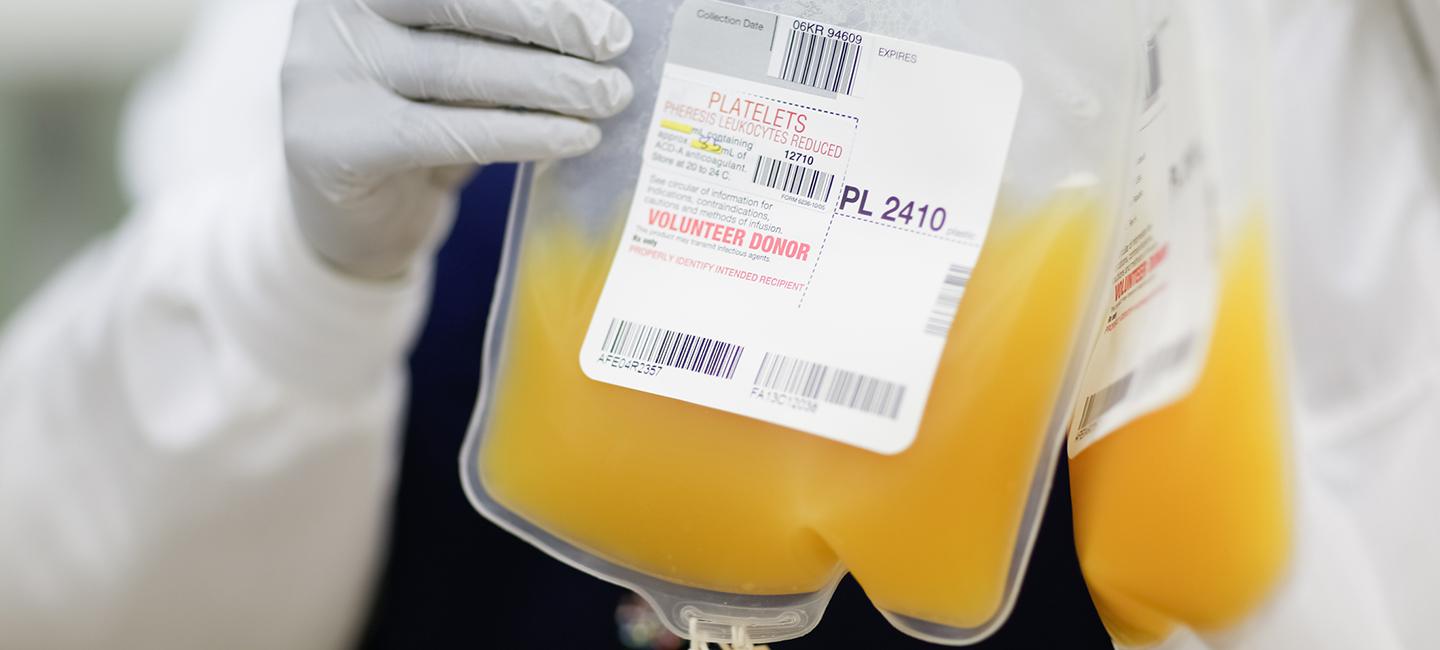The Importance of Blood Donations
Every year an estimated 6.8 million people in the United States donate blood and 4.5 million will need a blood transfusion. At Moffitt Cancer Center, blood transfusions are a daily occurrence. Since blood cannot be created in a laboratory and there are no substitutes, cancer patients depend solely on donations.
Why Cancer Patients Need Blood
Last year, Moffitt conducted 15,699 red blood cell transfusions and 11,621 platelet transfusions. Cancer patients are in a consistent need for blood for many reasons - loss of blood during surgery, low blood count due to the side effects of chemotherapy and radiation, or anemia, which can be caused by the disease itself. Cancers in the blood and bone marrow, such as leukemia and lymphoma, are another reason for a transfusion because the disease does not allow the body to produce normal blood-making cells.
Types of Blood Donations
There are several types of blood donations and one donor can help up to three patients.
A single unit of blood can be separated into different components such as red blood cells, plasma and platelets.
Whole Blood is the most common and most flexible blood donation. It is usually collected in one pint and used to help multiple patients, by being separated into different components.
Plasma is collected through apheresis, which is the process that separates plasma from other blood components. It has blood clotting factors needed to help trauma patients and those battling certain diseases like cancer.
Platelets are also collected through the apheresis process. Once platelets have been selected from the donor’s blood, the red blood cells and other fluids are returned to the donor. Cancer patients are the primary recipients of platelets as they play a vital role in cancer treatment.
Double red cell donation is the collection of only red cells through the apheresis process. It allows donors to give double the amount of a whole blood donation. It can be used for anyone suffering from blood loss.
The Importance of Donating Blood
Today, most medical care depends on a steady supply of blood from donors, as one in seven people entering the hospital need blood. For Moffitt, as cancer care increases, so does the demand for blood and platelet donations. An adequate amount of blood is needed in all health care facilities to meet the urgent need for patients facing trauma and other lifesaving procedures, such as blood transfusions – which saves millions of lives each year. Donating blood is a simple procedure that can be done within an hour. To donate blood in your local community visit www.lifesouth.org or www.scbb.org.



